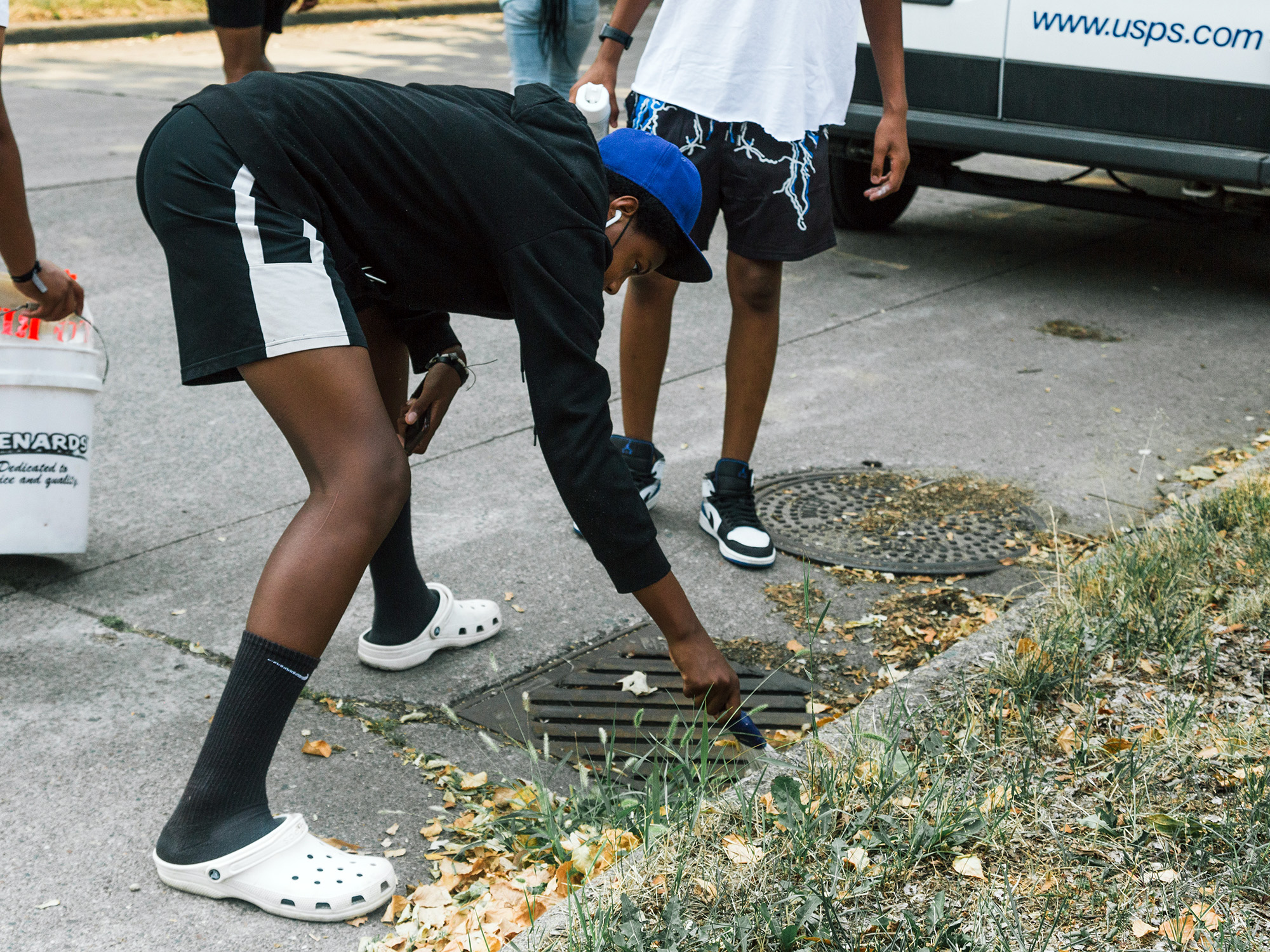5 ways you can reduce lesser-known water pollutants

Leaves and grass clippings can flow into our waterways via storm drains, causing water quality issues. (Photo by Tamar Patterson for FMR)
When we talk about water pollution, people often think of oil slicks or gasoline. But some threats to water aren't as obvious: fertilizer runoff, medications, tiny plastics — even leaves and fleece blankets!
As part of our 30 ways to help the river series, here are five ways to ensure lesser-known pollutants don't end up in the river.
1. Avoid contributing to microplastic pollution
Since plastic can stick around for 500 years or longer, it inevitably ends up in our water. Microplastics, or tiny pieces of broken down plastic, are even making their way up the food chain — they're in our drinking water and in our bodies.
Microplastics come from plastic bags, take-out containers, cosmetics and more. But the main source affecting our river is less visible: plastic fibers in synthetic fabrics like microfleece. When put in the laundry, these fibers enter wastewater treatment but slip through treatment plants into the river.
In addition to choosing reusables over single-use plastics, river-conscious residents can:
- Be careful not to litter or flush plastics.
- Check out BeatTheMicrobead.org for care products to avoid.
- Buy clothing and other fabrics made of natural fibers.
- If you have fleece or other microfiber items, do laundry less often and fill the load. You can also look into installing a filter, or using a laundry bag or laundry ball designed to reduce microplastic pollution.
2. Eat clean-water crops
To restore the river's water quality here and downriver, we need living crops on our agricultural fields all year round. Working toward continuous living cover, which includes planting deeper-rooted perennial crops like Kernza, can reduce erosion and pollution, as well as benefit soil health and wildlife.
Some of these crops are pretty tasty! Do your part by eating delicious baked goods, pastas, hazelnuts and more. Here's a list of places to buy clean-water crop products.
3. Adopt your street's storm drain
Grass clippings and leaves that blow into the street will wash down the storm drain and into the river. Why would these natural materials be a problem? All that organic matter has to decompose, sucking up oxygen and releasing nitrogen — factors that lead to fish kills and algal blooms.
One solution is to adopt a storm drain, or take on these tasks on your street:
- On your neighborhood walks, stop by and scoop out whatever is caught in the grate. (Don't forget safety gloves!)
- Before big storms, be sure to unclog nearby drains.
- Prevent buildup by raking leaves out of your street.
4. Don't flush pills
Though getting rid of expired or unwanted medications is important, don't send them down the drain. Wastewater treatment systems won't remove acting agents — leading to reproductive, growth and feeding problems for fish and other aquatic wildlife. Most counties offer a way to get rid of old pills safely (Hennepin, Ramsey).
5. Use a car wash
Washing a car in your driveway might seem like a water-conscious choice since you can control how much water you use. But all the suds, built-up salts, grease and dust rinse right down the road into your storm drain, then straight to the rivers and lakes nearby — unfiltered and untreated.
Luckily, most car washes are required by law to route their water through treatment systems that can pull out cleaners and residue. Some even reuse their water!
Of course, biking, walking or riding Metro Transit instead of driving will help the river too by reducing your carbon and climate change footprint.
30 ways you can protect the river
Looking to take action and make changes for the river you love?
We've rounded up 30 ways to get started.